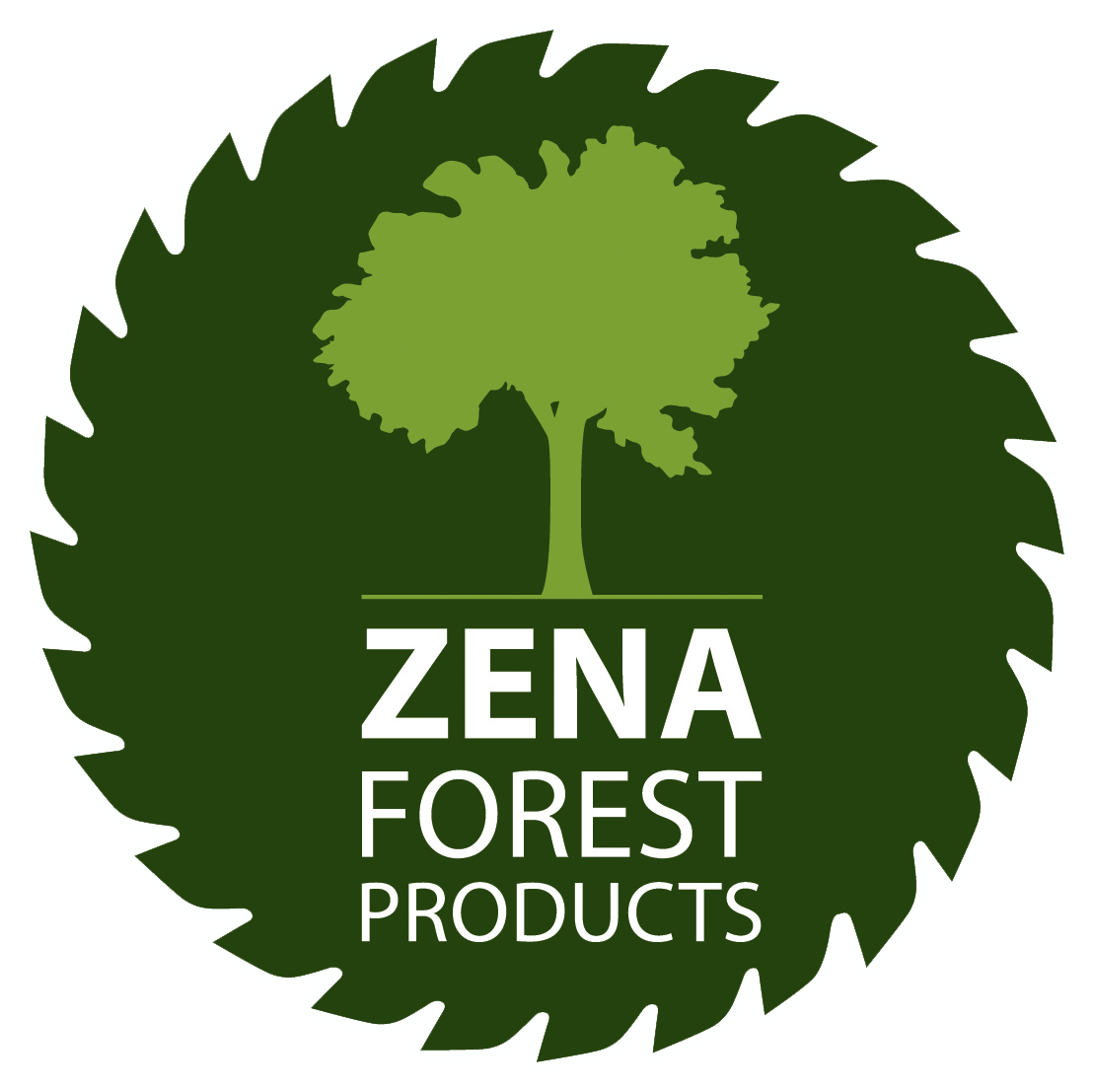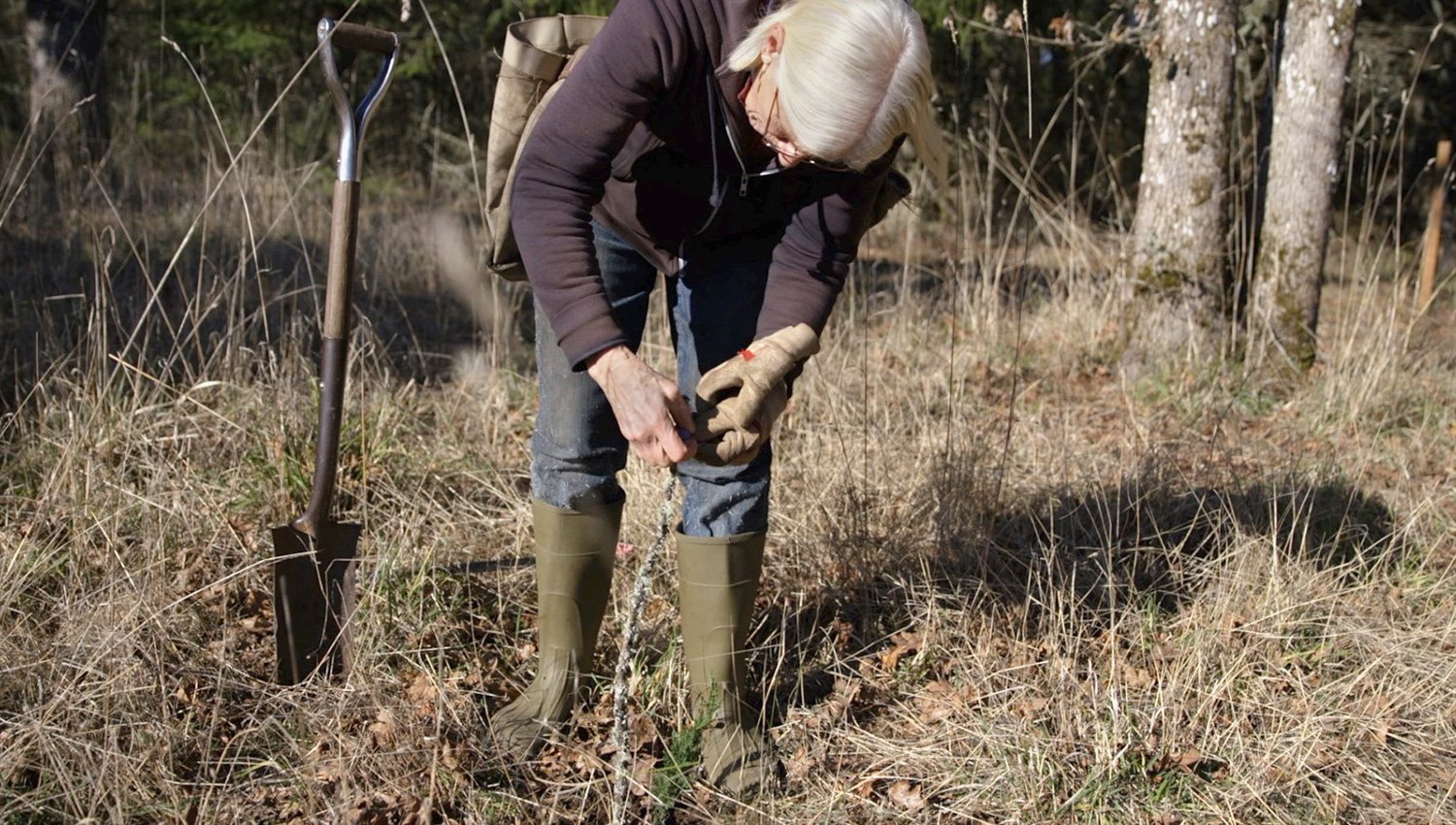It is Tree Planting Time at Zena
Sarah Deumling puts the finishing touches on a newly planted tree by marking it with a stick and a flag.
By Sarah Deumling | February 4, 2025
Winter is planting time here in the Willamette Valley. As soon as the soil is thoroughly wet, it’s a good time to plant. The sooner the seedlings are in the ground, the better the chance the roots have of establishing themselves in the surrounding soil before the soil starts to dry out.
A new generation of trees takes root.
Planning and Planting for the Future
Contrary to the long-held beliefs of local forestry leadership (when I started at Zena Forest), Douglas-fir does not thrive on every acre of Western Oregon soil. With the sobering trajectory of climate change, we must strategize to ensure that the future forest survives. This means that we must carefully consider which species to plant and which sites will give each tree the best shot at survival.
This year, we are planting eight different species, including incense cedar, Willamette Valley ponderosa pine, giant sequoia, coast redwood, Port Orford cedar, Oregon white oak, and red alder on a wide variety of sites. Each species has its own soil and site preferences: moist versus dry, shade versus sun, southwest versus northeast-facing slopes, etc. If you know your land well, your understory vegetation will give you compelling clues as to which species will thrive there.
On harder sites with poor soil and a southwest exposure, Douglas-fir has been dying for the last 15 or so years, whereas the Oregon white oak is showing clear signs of being the species that can persist through the challenges of climate change.
Incense cedar
Incense cedar is native only as far north as Eugene but thrives here in the Mid-Willamette Valley, and outperforms Douglas-fir on difficult sites.
With the sequoia, redwood and Port Orford cedar we are embracing the practice of assisted migration by planting trees that are adapted to warmer climates. Trees do migrate, but not fast enough to keep up with the rapid intensification of climate change.
Alder is a possible replacement for our Oregon ash, which grows in the riparian areas of the Willamette Valley, shades the creeks, and holds the creekside soil in place. The Oregon ash is unfortunately facing the arrival of the non-native emerald ash borer, which has already severely impacted ash trees east of the Rockies.
Emerald ash borer. Photo by Sam Droege, Public domain, via Wikimedia Commons.
Putting Our Order In
As soon as this year’s seedlings are tucked into the ground, we begin planning for next year’s planting. Seedlings are precious, and if we fail to order early, some species will sell out.
Each seedling nursery offers a particular variety of species. With 1,300 acres of forest with various types of sites, we must coordinate ordering from several nurseries. Over the last 38 years, we have annually planted between 5,000 and 15,000 little trees. Knowing how many of each species of seedlings we’ll need in the spring is impossible due to a myriad of variables, so we must rely on our experience and instincts to guide us through this process.
If we end up with too few seedlings, some areas will have to wait until the following year—though sometimes we can find extra naturally regenerated trees in the forest that can be transplanted to areas where they’ll have a better chance of thriving.
Should we end up with too many purchased seedlings we are lucky to have a good network of fellow forest owners to whom I can offer the extras.
The planting crew is loading up and getting ready for a busy day of planting.
Coordinating for Success
Perhaps the most complicated piece of the planting cycle is the actual organization of all the moving parts at planting time.
First, we must consider seedling availability from the nurseries, which is weather-dependent. Large customer orders are often prioritized and filled first. While we may be home to the largest contiguous forest left in the Willamette Valley, in the broader context of Oregon’s forests, we’re a small player among giants.
Weather also plays a big part in our planning, as one cannot plant in frozen ground, and the seedlings must be kept between 30 and 40 degrees while they await their turn to be planted.
Next, we focus on scheduling and coordinating with our planting crew, taking into account their availability, as they also serve other clients. I feel incredibly fortunate to work with such a reliable local team, many of whom have been with us for the past 20 years. Over that time, we’ve developed a strong rapport, and they know exactly how I like to plant—whether it’s the species, spacing guidelines, or countless other details. Their crew of 5-6 skilled workers efficiently uses their shovels and hoedads to get those little trees into the ground, setting them up for success.
The crew moves quickly, yet carefully, as they work each seedling into its new home.
Ultimately, planting time is a happy, promising time for me, surpassed perhaps only by the satisfaction of watching those seedlings grow into saplings and then into mature trees. I started this forest stewarding project as I was turning 50 and soon thought, “Oh darn, I will never get to see the results of my efforts.” But I was wrong. Now, almost 30 years later, some of those early plantings are thriving patches of young forest - soaking up carbon, preventing erosion, conserving precious water resources, and making me smile.
The next generation takes root.







